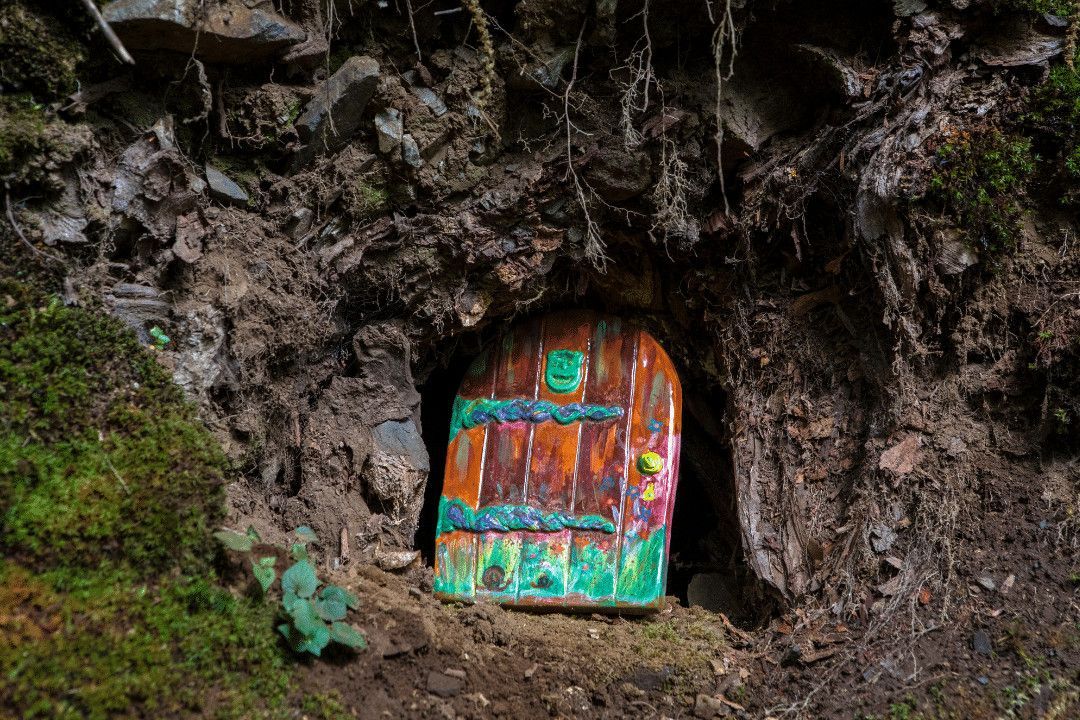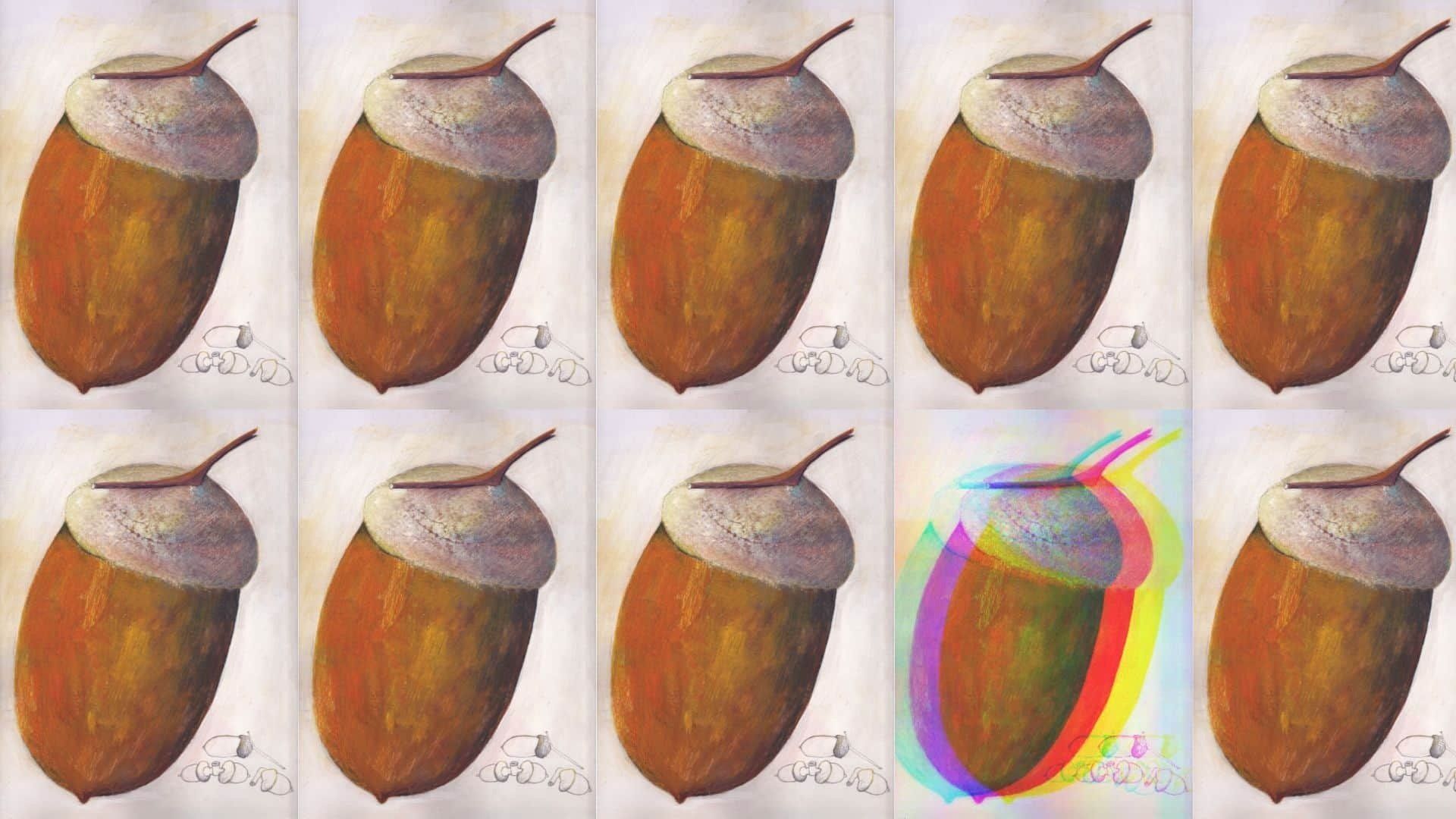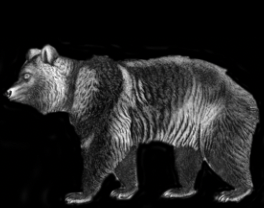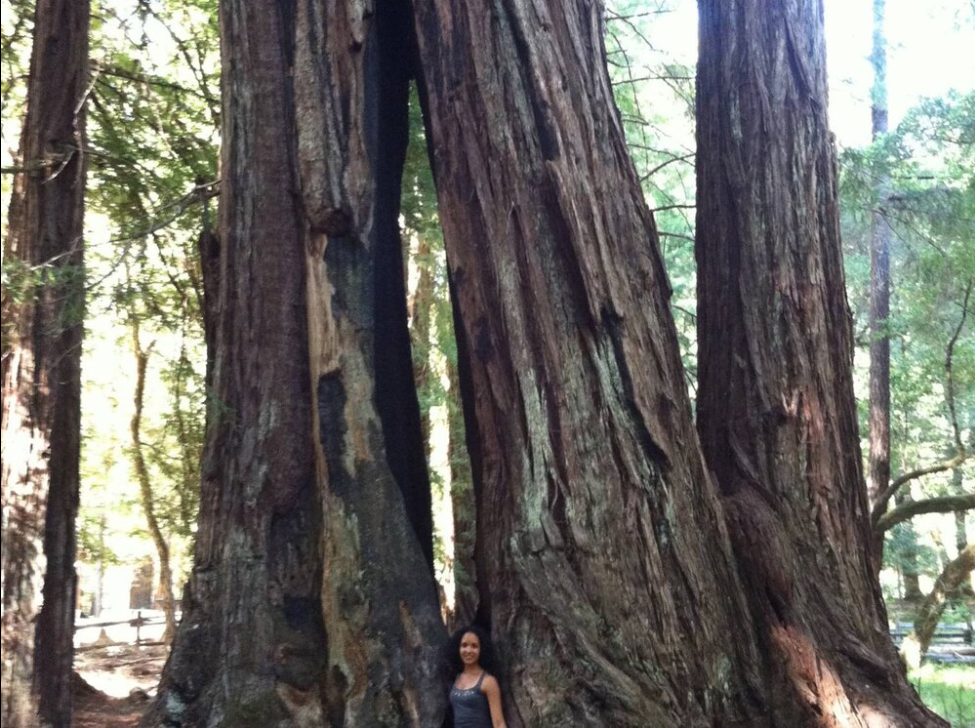
September 20, 2021
Why Story These Grounds: A Personal Reflection
By Kaitlin Smith
This essay explores some of the personal and philosophical underpinnings of my project Storied Grounds.
Growing up as a visibly mixed-race woman in the United States, I’m no stranger to having people read placelessness and pathology onto my body and interior experience. The type of intrapsychic conflict attributed to mulattoes has been the stuff of literature, film, and seemingly endless works of scholarship. But seldom do I encounter a substantive reckoning with the epidemic of placelessness that besets so many modern people, and not just those who wear their multiplicity and otherness on the outside of their bodies.
The wellsprings of difference that shape us are multiple and whether they are readily visible or not, it is challenging for any person to experience any meaningful sense of home if all that binds them to place are shallow allegiances and surface-level identities buoyed by mass cultural trends. I’ve long felt intuitively that a more unshakable foundation for belonging must be available in the Earth itself, but how to access it without tripping over the historical minefields and contemporary realities that sustain detachment and litter our lands with violence?
The interdisciplinary field of Ecopsychology has been a driving force in this unfolding conversation within Western societies, pointing to the fundamental human need for connection to the natural world, and the need to disrupt the patterns of alienation and disembodied grief that have taken hold. Yet so much of the literature on the psychological imperative of cultivating a sense of place does not sufficiently address the reality of migration—whether chosen or forced—across space and time, and the various factors (e.g. violence and collective trauma) that may severely complicate an individual or community’s connection to a given place and embodied experience more generally. This raises a number of questions including how do we cultivate soulful connection to place when ancestral nature connection practices feel inaccessible or unfitting, when we struggle to locate clear points of origin, and when the chain of events that brought us to this place (and now sustains our lives on it) have been riddled with pain and violence?
Complex historical and contemporary realities ranging from land dispossession and settler colonialism to terroristic violence and extractive economies make it challenging for a great many people to experience safety, belonging, and self-determination on any landscape. Further, various dislocations and patterns of violence have disrupted access to lineal traditions previously passed down at the grassroots, opening the door to the ‘epistemic’ violence of cultural appropriation as so many of us attempt reconnection to our living surroundings. In this time of heightened ecological change, it is also humbling to consider how relationships to place may also be changing for all manner of life forms, the migratory journeys we may yet undertake, and how ‘home’ and ‘community’ may be reconfigured in the face of deepening trauma, ingenuity, and resilience.
In the face of all of this unceasing complexity, it is easy for emotional stagnation and feelings of detachment to set in. Questions like “should I even be ‘at home’ in this place” or “how can I celebrate beauty in the midst of so much suffering and violence” emerge. And yet, I have found powerful antidotes to these stagnating lines of thought in fun embodied practices that nourish my body and feed my imagination. Practices such as bioregional herbalism, foraging, navigating without a GPS, and learning the language of birds—along with a sustained openness to enchantment—have allowed me to experience a deeper sense of home and earthly connection even in the midst of many unresolved questions. Ecopsychological theorist Craig Chalquist has argued that enchantment is a basic right of human beings and that “an assault on enchantment is an assault on the human spirit.” He thus calls for “enchantivism,” a departure from activism that seeks entirely different rewards. In Chalquist’s work, enchantivism refers to
“the many ways we make lasting change by telling reenchanting stories about our relations with ourselves, each other, or our ailing but still-beautiful planet; sharing our reflections and inviting others’ on the relevance of these stories; and then letting the stories impel creative and thoughtful responses to how things are.”
This approach does not purport to heal all of the ills of civilization but is rather an invitation to increased aliveness, awe, and solidarity in the midst of it all. Through this reorientation to fun and enchantment alongside sustained reflection, I believe that we can combat the stultifying forces that dispossess us of meaningful connection and aliveness.
As I’ve considered what it could look like to share this experience with others, I contemplated my learnings from an earlier experiment of mine centered around freeing learning and consciousness from various types of enclosures. A few years ago, I had begun exploring what possibilities can emerge when you free consciousness from the ivory tower and other contexts that circumscribe the real, the true, and the types of intelligence that matter in a more-than-human world brimming with intelligence. Among the many lessons that these experiments produced was a core insight that embodied connection to the web of life is the vital, originary core of all learning and genuine empowerment, and merely invoking it in the abstract just isn’t enough. As David Abram wrote in his book Becoming Animal, “[t]his animal body, for all its susceptibility and vertigo, remains the primary instrument of all our knowing, as the capricious earth remains our primary cosmos.”
Educational philosopher Paulo Freire famously opined that we “read the word to read the world”—that is, to gain a deeper grasp of our social environment. Like Abram, however, my experience teaches me that we must also learn to perceive the more-than-human lifeworlds beyond the text to achieve any meaningful grounding in reality. There’s so much truth that escapes textual representation and can only be touched, tasted, intuited, and otherwise perceived through an embodied encounter with the livingness of the world within and beyond ourselves. In contrast to a mass culture that leaves us simultaneously everywhere and nowhere in particular, informing us of who we are through narratives that abstract us from felt experience and place, we have an opportunity to recalibrate our meaning making practices to our unmediated experiences of the world itself.
What I am embarking upon through Storied Grounds is an experiment in tapping the intelligence of the body, the abundance of the landscape, and the richness of stories of people and place to cultivate an experience of 'home' irrespective of the thorny paths that brought each of us here. Through this project, I aim to take education and healing beyond the four walls of the classroom, the physician’s office, and other enclosures into the nooks and crannies of local landscapes where the co-mingling of micro-stories of place and species, and meta-stories of land and society can breathe a greater sense of connection and aliveness into our daily experiences. Together, we will explore embodied practices and folk knowledge that participants can integrate into their daily lives, transforming the richly storied grounds that surround us into a source of abundant enchantment and the body into a site of knowledge and empowerment.
This Storied Grounds blog is meant to serve as a repository of reflections on my in-person events where we undertake these experiments in earthly belonging, as well as travelogues from my own adventures in which I chart my personal-ancestral connections to place and the biota I encounter along the way. Thank you for joining me as I explore these terrains!
Other Posts You May
Like
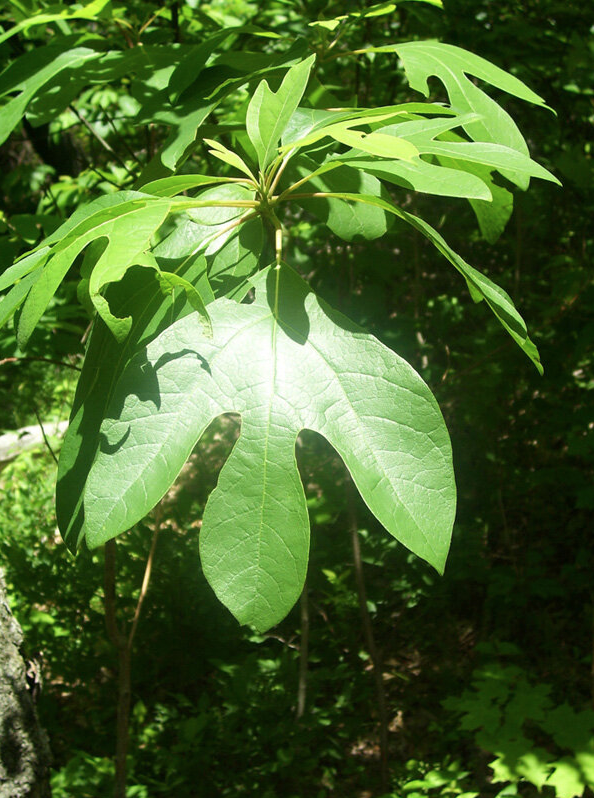
Sassafras is a plant with a wildly oscillating reputation. From panacea to mass-produced soft drink to illicit drug source and back again, sassafras has had a varied career. As one might expect given its colorful record, sassafras is enigmatic in appearance with multi-shaped leaves that simultaneously resemble dinosaur footprints, mittens, and your run-of-the-mill unlobed leaf. The plant is also unusual in its smell—when scratched, it emits a shockingly familiar "Froot Loop" aroma. But fortunately for us, sassafras and its forested environs contain none of the nutritional landmines of the cereal aisle and, what’s more, it offers a potent array of medicines with an expansive array of applications. I deepened my appreciation for sassafras during a recent visit to United Plant Savers’ Goldenseal Botanical Sanctuary in Ohio where I had the opportunity to browse the personal library of the late Dr. James "Jim" Duke—a prominent botanist, ethnobotanist, and herbalist. There, I encountered Doug Elliott's book Wild Roots: A Forager's Guide to the Edible and Medicinal Roots, Tubers, Corms, and Rhizomes of North America in which he explains that sassafras became the New World's first "cash crop" due to its extreme popularity in Europe where it was regarded as a cure-all. He notes that it was consumed widely as a tea until its usefulness for treating syphilis rendered it unfashionable to consume. Not long after, he writes, tobacco would displace sassafras as the plant of choice. Though not a focus of Elliot’s analysis, it is also crucial to note that the medicinal use of sassafras by indigenous peoples of North America including the Cherokee are clearly the first uses of sassafras in what is now the U.S. Further, a history that centers marginalized knowledges “from below” also reveals that, even after the ascendancy of tobacco, sassafras maintained a place in the healing practices of settler peoples operating at the grassroots. Even now, sassafras remains a valued remedy in various traditions of American folk medicine , among them Appalachian folk medicine and the African American tradition of Hoodoo. This was evident when I visited a site of familial significance and discovered one specific way that sassafras was likely used by my own ancestors. Earlier this year, I visited Central Pennsylvania where my great-great grandfather Janos Luckazs worked as a coal miner in the 1800s, extracting bituminous coal from several mines in Clearfield and Centre Counties over the course of his working life. In an effort to learn more about what his day-to-day life may have entailed, I visited the Coalport Area Coal Museum where I learned a great deal about the lives of coal miners in the 1800s. One unexpected learning arose, however, while examining artifacts enclosed in a glass case. The museum's curator pointed out a bottle of sassafras oil and indicated that, even following sassafras’ decline as a fashionable substance, miners and other common folk would use it to support their ailing bodies. I was especially excited to discover this ancestral story due to the apparent connection between Pennsylvania coal miners and the emergence of the modern world’s most widespread and marketed sassafras product: root beer. After tasting an herbal concoction featuring sassafras while on his honeymoon, druggist Charles Elmer Hires created Hires Root Beer— the first mass-produced root beer for commercial sale. The product debuted in Philadelphia in 1876 and though Hires intended to call his beverage "Hires Herb Tea," his friend Dr. Russell H. Conwell insisted that Pennsylvania coal miners would never drink something called "herb tea," prompting Hires to select the name "root beer" instead. The A&W Root Beer we know today would enter the market in 1919 and ascend quickly in popularity aided by the teetotaling sensibilities of the prohibition era. Products that contain safrole—an active constituent found in sassafras—would be banned by the FDA in 1960 after a scientific study indicated that it produces carcinogenic effects in animal models, prompting sassafras-free root beer recipes to emerge. Despite this discovery, the applicability of this finding to human health remains controversial. For example, research conducted prior to the ban showed that ill effects did not appear in humans when they were given approximate doses of safrole. Today, figures like Dr. Andrew Weil and Dr. Axe are encouraging people to give sassafras a second look, pointing to the substantial difference between the lab procedure used in the original experiment that had safrole banned and typical modes of human consumption in real life. Unfortunately for sassafras, its reputation has been further complicated by the emergence of two drugs synthesized from its misunderstood roots. These drugs go by many names: the first, MDMA, is commonly known as "ecstasy” and “Molly”; the second, MDA, goes by “Sally,” “sassafras,” or just “sass.” Despite their differences, both would be used in psychotherapeutic circles to promote emotional openness and reduce anxiety. MDA was first used in this manner in the 1960s but was subsequently banned when negative side effects were discovered. It was in the 1970s that MDMA would gain wide usage in clinical settings and eventually became widely available as a street drug. In 1986, however, the U.S. Drug Enforcement Agency would reclassify MDMA as an illegal substance based on evidence that the related substance MDA , not MDMA, induced neurodegeneration at high doses. Efforts to overturn this decision have been raging ever since and, 35 years later, MDMA is being used with great success in clinical trials centered around treatment of Post-Traumatic Stress Disorder (PTSD). As a result of MDMA’s popularity on the black market, sassafras has now become subject to overharvesting . In light of this, the mounting data on MDMA’s therapeutic efficacy raises questions about how widespread clinical use could magnify an existing ecological problem. Though there is some suggestion that companies are attempting to synthesize safrole , it is not yet clear how clinical use of MDMA may reshape sassafras populations in the U.S. and around the world. In the meantime, sassafras remains a beautiful, unique, and unquestionably complex denizen of the understory who reminds me of the resilience and ingenuity of my ancestors, the endurance of folk healing traditions, and the hazards of medical reductionism. Despite changing public opinion and administration methods, sassafras’ singular appearance, aroma, and storied relationship with humanity remain. I hope that the next time you glimpse sassafras on a trailside, you’ll say “hello” and appreciate the veritable pharmacopeia at your feet.
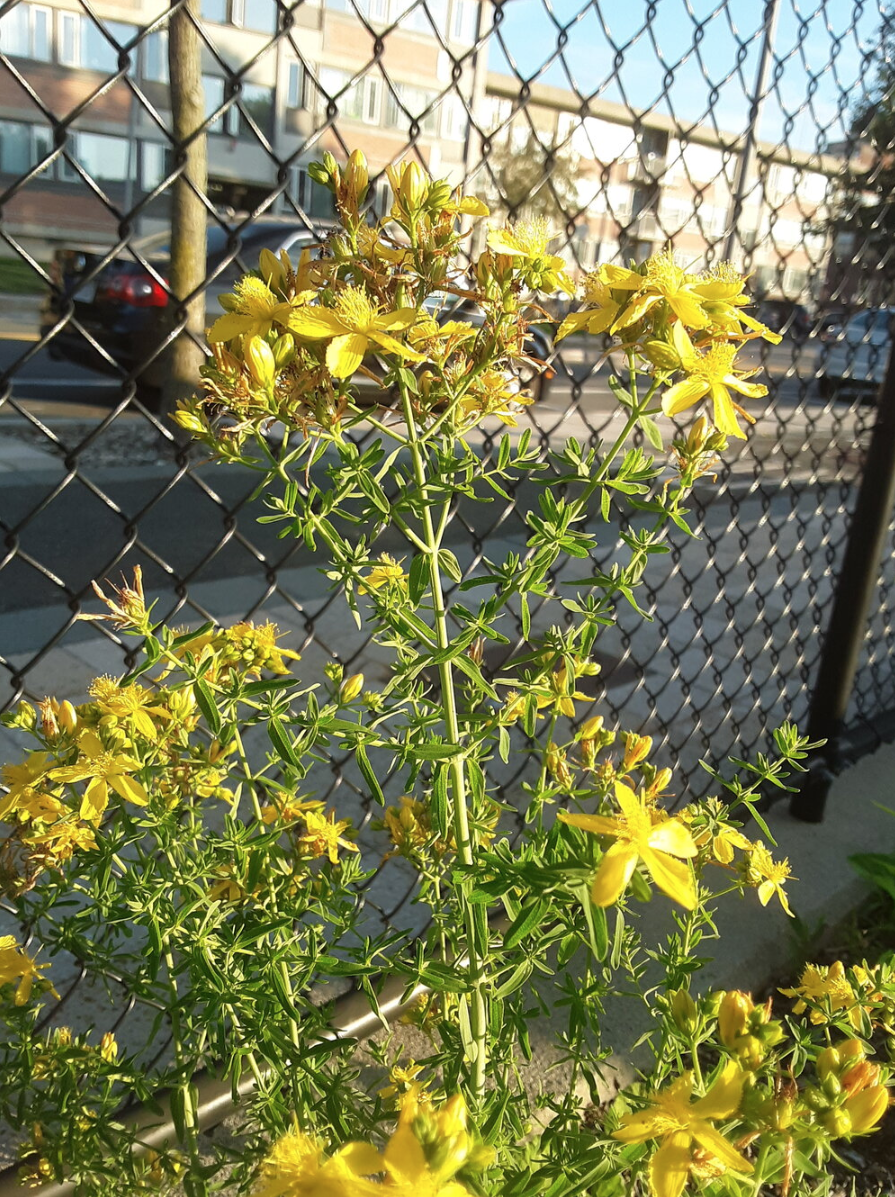
At a recent event that I led with Outdoor Afro at the Neponset River Reservation, we came upon a large stand of St. John's Wort—one of my favorite plants due to its uplifting presence and ability to hold its own alongside pharmaceuticals in the human body. St. John's Wort is widely regarded as a free and effective herbal alternative to pharmaceutical antidepressants including SSRI drugs, and one that doesn't present the litany of side effects that the pharmaceutical options typically present. After describing some of the powerful ways that one can work with St. John's Wort (e.g. by drying the wild plant for tea, tincturing it, or creating an infused oil to apply topically), I shared the following story based on an experience from the previous summer that this image partially captures. I was taking a leisurely walk through what is known as Area Four in Cambridge, Massachusetts. This is an area of Cambridge that is situated on the edge of the Massachusetts Institute of Technology (MIT) campus and Kendall Square—an area that houses over 120 of the region's 1,000+ biotech companies. BioGen, Johnson & Johnson, Pfizer, and Sanofi are among the pharmaceutical giants that have made their homes there. As I walked around this landscape so marked by the project of technological progress, I noticed something that—to many Cambridge residents—might seem either irrelevant or distracting if it managed to draw their attention at all. I noticed multiple beautiful stands of St. John's Wort and a particularly abundant one directly adjacent to Sanofi. This is one of the pharmaceutical companies that manufactures the antidepressant drug Wellbutrin. Known by the generic name Bupropion hydrochloride, Wellbutrin has been at the center of an ongoing saga of recalls, reintroductions, and price gouges that appear to have left a number of its users seeking alternative options. In light of these concerning trends, I was delighted to discover the presence of St. John's Wort in the immediate vicinity of Sanofi. Though separated from the Sanofi campus by a large fence in this particular case, much of the St. John's Wort was visibly bursting out of its enclosure and, in some cases, even dangled precipitously over the edge. I found it inspiring to discover that this golden plant had decided to sprout in such abundance in this particular location as if to say to passersby "whether or not you know my name, I'm still here and I’m here for you." Traditionally harvested on St. John's Day, or June 24th, St. John's Wort grows abundantly in meadows, fields, and areas with gravely soil. Walking through this largely barren and angular architectural landscape, I couldn't help but contemplate what historical transformations have prompted us to forget the immense power of plants like St. John's Wort. Though there are a great many factors that one could list here, one modern thread is certainly the movement from more reciprocal ways of relating to the natural world and healing the body to escalating nature illiteracy and near-total reliance on consumer products and experts for healing. Add to this the historical movement from education steeped in natural history to science education that unduly emphasizes the micro, displacing other vital ways of seeing and making sense of the world. We’ve moved from ways of assigning value that consider the abundance that is readily perceptible with all of our senses to those centered around, for example, what can only be glimpsed through the aperture of a microscope and demystified with the blessing of particular purveyors of knowledge. Though we seem to have gained from the birth and expansion of these sciences, I fear that we have lost a great many riches in its all-encompassing grasp. The stands of St. John’s Wort serve as a reminder of the healing and learning possibilities that remain accessible to everyday people using the ancient tools of sight, touch, taste, and smell. I find it grounding and sense-making to develop relationships with these healing elements that occur in our own environments and that we can really interact with rather than turning only to medicines synthesized out of ingredients harvested elsewhere and offered up by corporate entities whose conflicts of interest have become so notorious. When I see St. John's Wort sprouting out of the sidewalk, on a hillside, or in some other location, it reminds me that the power of these various for-profit entities isn't total. There is still space to forge interdependent relations with the land around us and recover a relationship to our own emotional truths, undisturbed by the dulling of emotion and sensation that so many antidepressants induce. In contrast to pharmaceutical SSRIs, St. John's delivers a radically different medicine by reminding us of the sunshine and that it can coexist with its dark opposite, allowing authentic inner lives to take shape in a complex world. Ultimately, St. John's Wort reminds me that, alongside various large and powerful institutions, power can also be glimpsed in wordless acts of endurance, beauty, and grace without demonstrative displays and direct-to-consumer advertising. By turning down the volume on these programs and being willing to wander with greater sensorial attention, we may revolutionize our relationship to place and discover an outpouring of sunshine in unlikely places.
